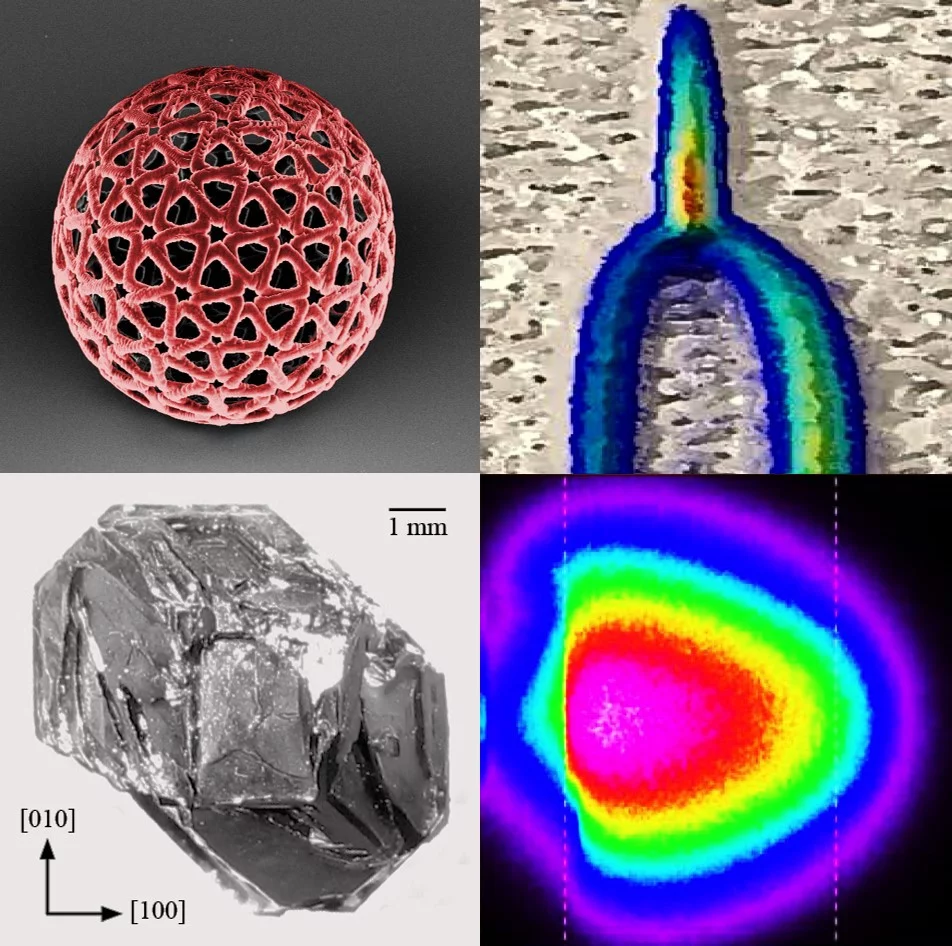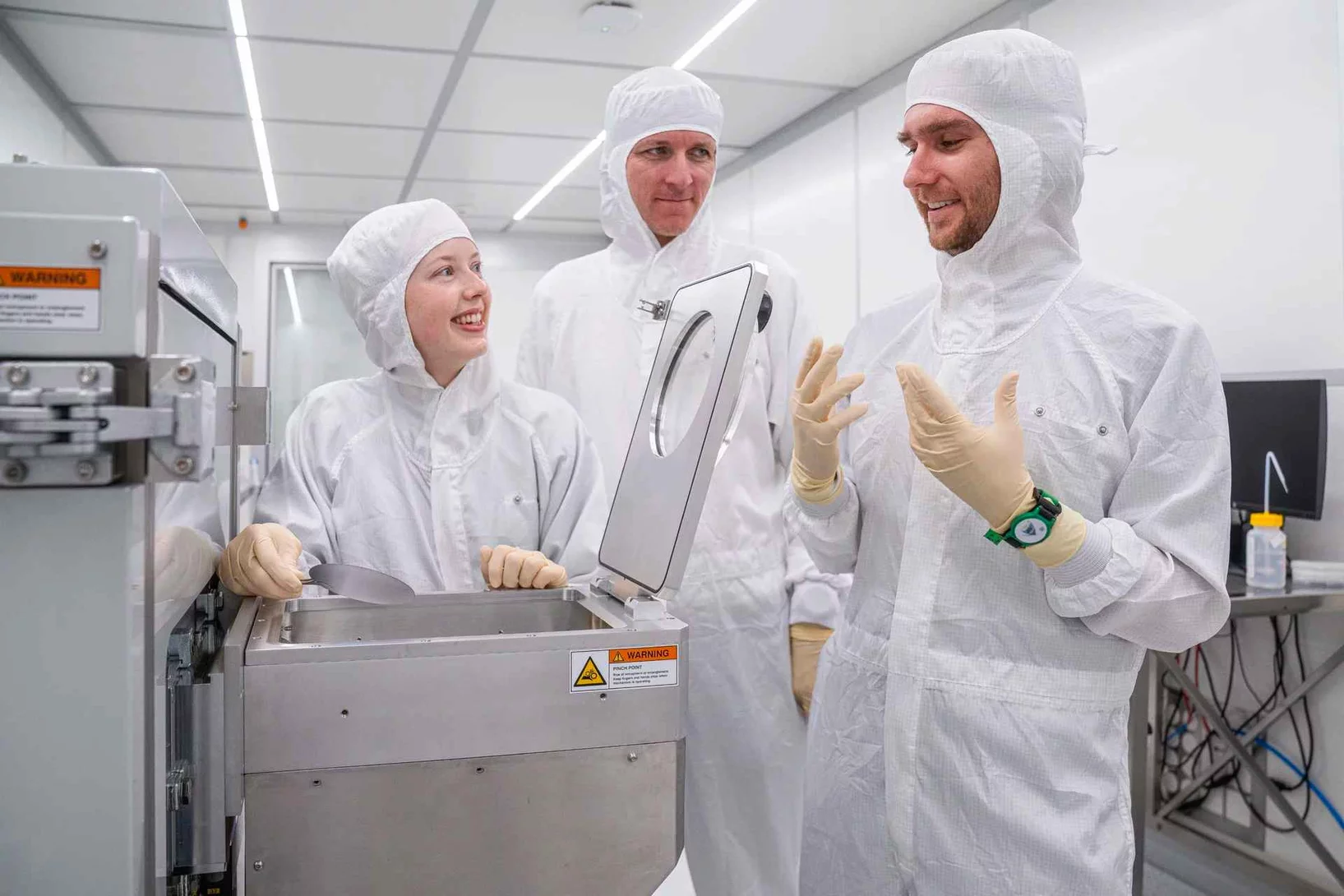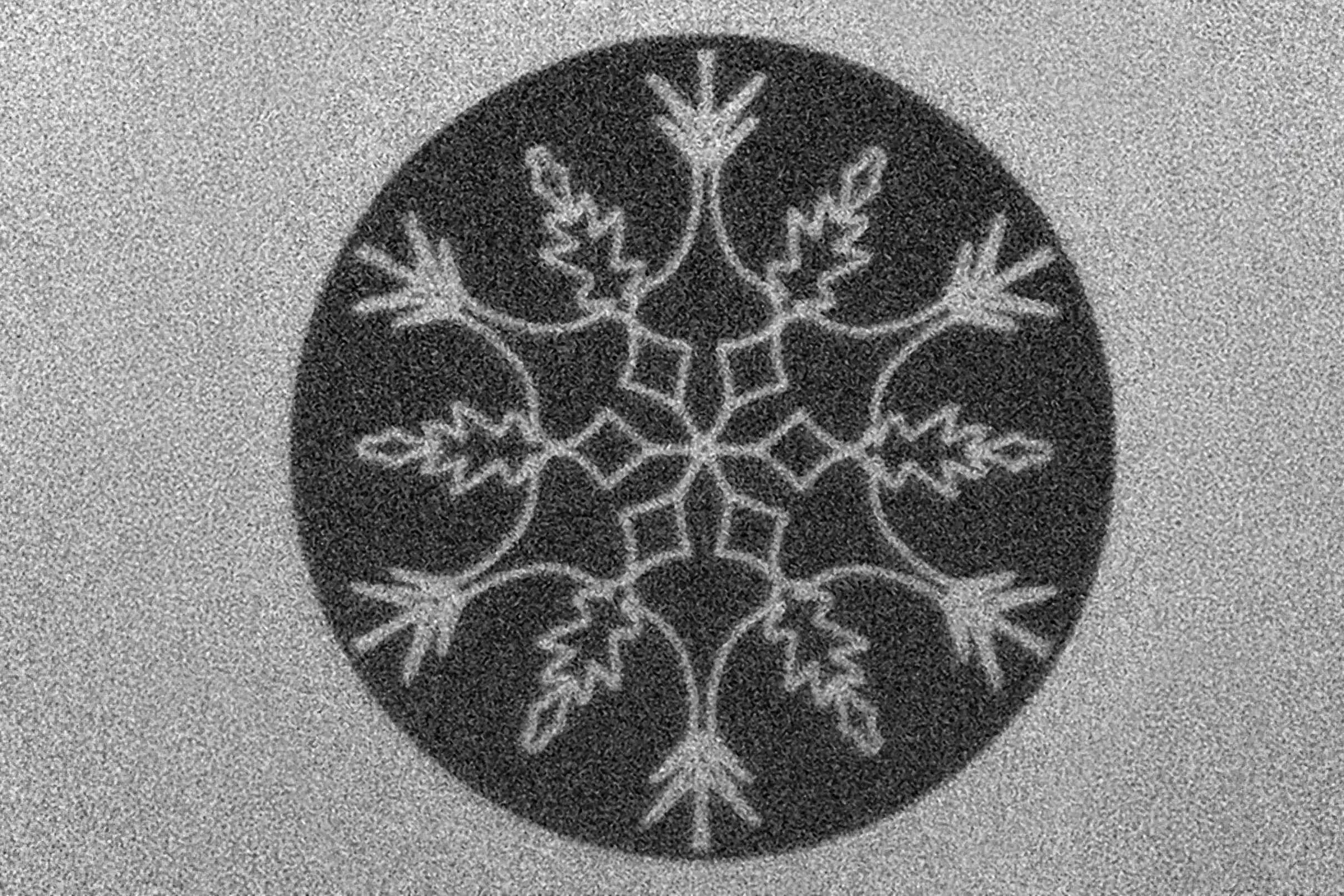The PSI Laboratory for Multiscale Materials Experiments focusses on designing novel functional materials in poly- and single crystalline form, as thin films and as multilayers.
Lab News
ETH CoLab Award for Mohammadhossein Montazerian
Mohammadhossein Montazerian was part of the winning team to secure an ETH CoLab Award. It is an award to help entrepreneurial research to make a first step towards business.
Laser draws made-to-order magnetic landscapes
Researchers at the Paul Scherrer Institute PSI, in collaboration with the National Institute of Standards and Technology (NIST) in Boulder, Colorado, have for the first time succeeded in using existing laser technology to continuously vary the magnetic properties of two-dimensional materials. This simple and fast method should make a large number of applications possible, including techniques for data storage and processing.
Photo: © Paul Scherrer Institute PSI / Mahir Dzambegovic
The Charpak-Ritz Prize 2026 is awarded to Laura Heyderman
Since 2016, the Charpak-Ritz Prize has been jointly awarded by the French Physical Society and the Swiss Physical Society to a physicist or a team for outstanding contributions to physics or its advancement.
& Scientific Highlights
Two-dimensional gradients in magnetic properties created with direct-write laser annealing
Across the fields of magnetism, microelectronics, optics, and others, engineered local variations in material properties can yield groundbreaking functionalities that play a crucial role in enabling future technologies. One-dimensional lateral gradients in material properties give rise to a plethora of new effects in thin-film magnetic systems. However, extending such gradient-induced behaviors to two dimensions has been challenging to realize experimentally. Here, we demonstrate the creation of two-dimensional complex patterns with continuous variations in magnetic anisotropy, interlayer exchange coupling, and ferrimagnetic compensation at the mesoscopic scale in numerous application-relevant magnetic materials. We exploit our engineered gradients in material properties to demonstrate novel magnetic functionalities, including the creation of a spin wave band pass filter and an architecture for passively resetting the position of a magnetic domain wall. Our results highlight the exciting new physics and device applications enabled by two-dimensional gradients in thin film properties.
Coexistence of Insulatorlike Paramagnon and Metallic Spin-Orbit Exciton Modes in SrIrO3
We probe the spectrum of elementary excitations in SrIrO3 by using heterostructured [(SrIrO3)m / (SrTiO3)l] samples to approach the bulk limit. Our resonant inelastic x-ray scattering (RIXS) measurements at the Ir L3 edge reveal ...
Discovery of Nodal-Line Superconductivity in Chiral Crystals
Chiral crystals, whose key feature is the structural handedness, host exotic quantum phenomena driven by the interplay of band topology, spin-orbit coupling (SOC), and electronic correlations. Due to the limited availability of suitable chiral-crystal materials, their unconventional superconductivity (SC) remains largely unexplored.
Here, the discovery ...
Fun Facts about Magnetism
The video is from the Visitor Centre psi forum of the Paul Scherrer Institute, where a cartoon avatar of Rhea Stewart, who was a Postdoc in Mesoscopic Systems, explains about our research to science enthusiasts.
Upcoming Seminars
Information to visitors: The seminars of the group are open to members of PSI and Project Partners, while the group meeting following the seminar is for group members only.
Recent publications
-
Kurenkov A, Maes J, Pac A, Macauley GM, Van Waeyenberge B, Hrabec A, et al.
Perpendicular-anisotropy artificial spin ice with spontaneous ordering: a platform for reservoir computing with flexible timescales
Communications Engineering. 2025; 4: 183 (11 pp.). https://doi.org/10.1038/s44172-025-00499-y
DORA PSI -
Pomjakushin V, Podlesnyak A, Puphal P, Shin S, White JS, Pomjakushina E
Magnetic contribution of itinerant electrons to neutron diffraction in the topological antiferromagnet CeAlGe
Physical Review B. 2025; 112(9): 094457 (13 pp.). https://doi.org/10.1103/xrmt-jfl8
DORA PSI -
Naamneh M, O’Quinn EC, Paris E, McNally D, Tseng Y, Pudełko WR, et al.
Persistence of small polarons into the superconducting doping range of Ba1−xKxBiO3
Physical Review Research. 2025; 7(4): 043082 (15 pp.). https://doi.org/10.1103/s3p1-cy1s
DORA PSI -
Aegerter D, Fabbri E, Novotny Z, Borlaf M, Yüzbasi NS, Comini N, et al.
Evaluation of dip-and-pull ambient pressure X-ray photoelectron spectroscopy for investigating oxygen evolution reaction electrocatalysts
ACS Applied Energy Materials. 2025; 8(19): 14554-14567. https://doi.org/10.1021/acsaem.5c02252
DORA PSI









